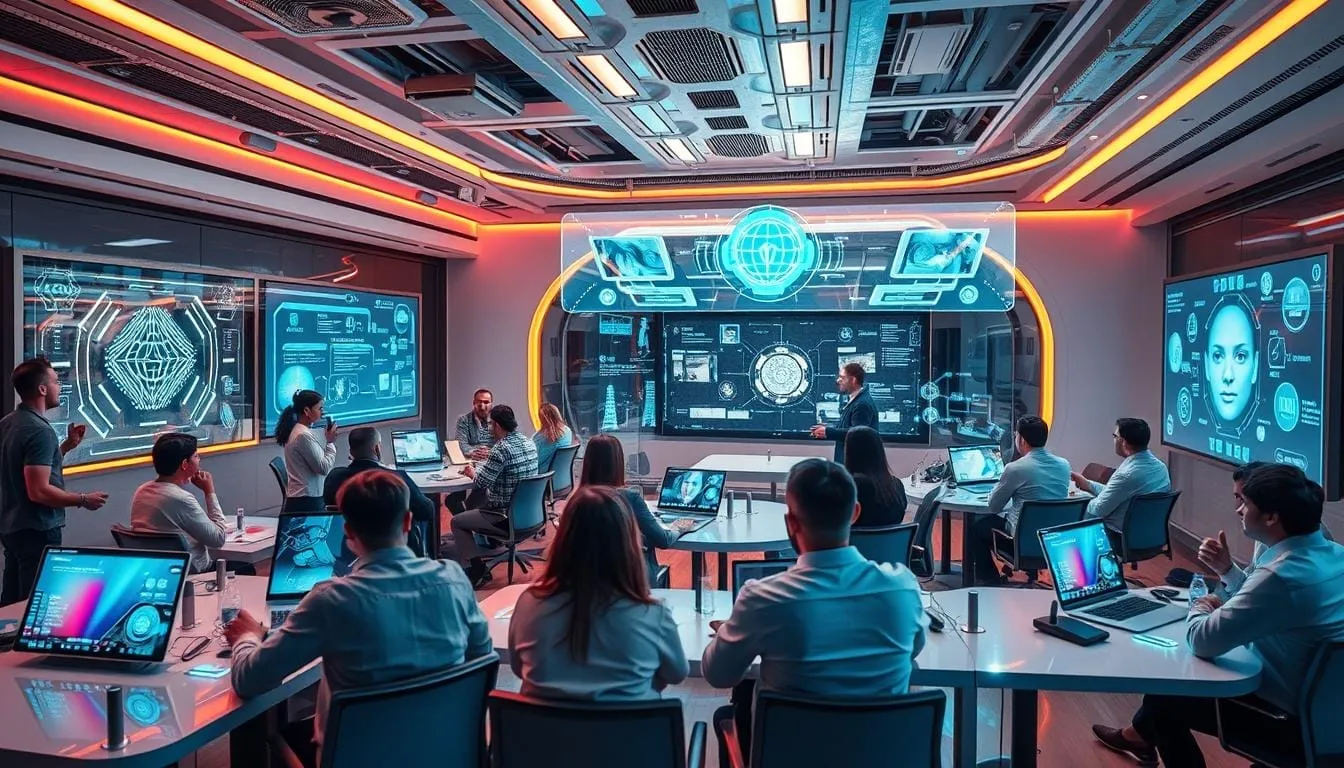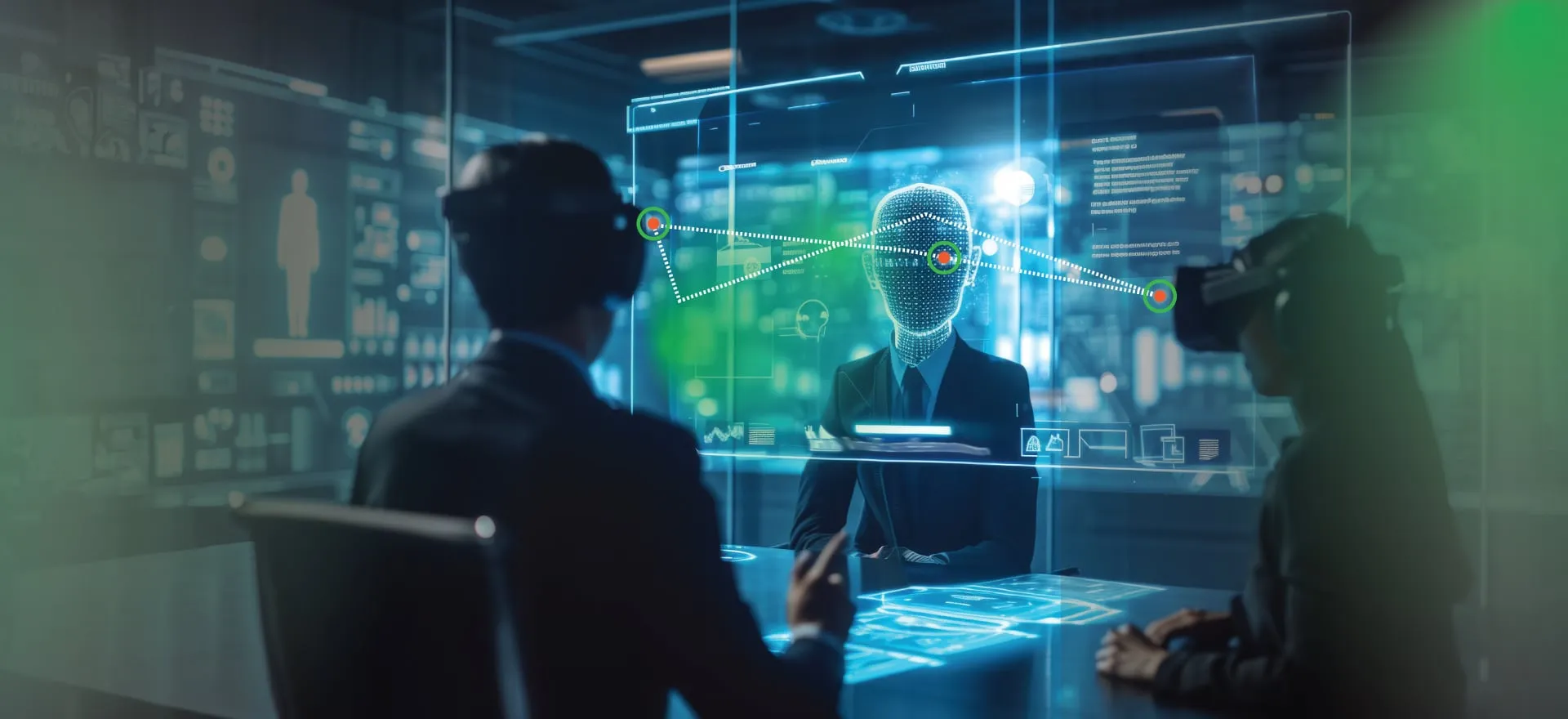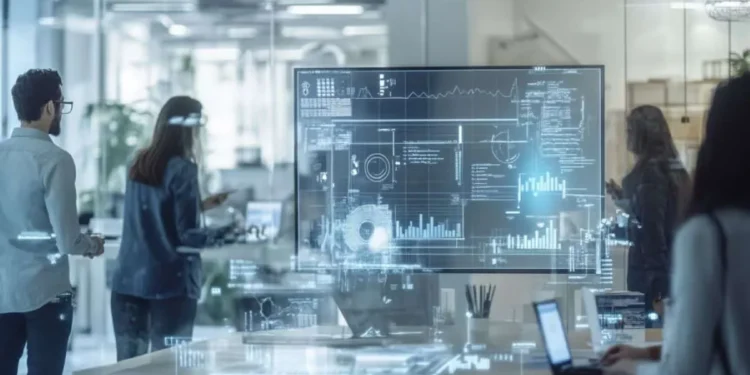In a world where technology is constantly evolving, the latest breakthrough in artificial intelligence (AI) has companies reconsidering how teams collaborate. A groundbreaking study conducted by researchers from Harvard, Wharton, Procter & Gamble (P&G), and other prestigious institutions reveals a surprising finding: AI can replicate the collaborative benefits of human teams, boosting individual performance to match that of two-person teams. This study challenges the conventional view of teamwork and suggests that AI is poised to reshape the workplace in profound ways.

The Surprising Findings of the P&G Experiment
In this study, 776 P&G professionals were tasked with generating new product ideas in categories like baby care, feminine care, grooming, and oral care. The results were eye-opening. The researchers divided participants into four groups: individuals working solo without AI, teams of two without AI, individuals using AI, and teams of two using AI.
The findings showed that individuals using AI were able to generate product ideas of the same quality as teams of two working without AI. “AI significantly enhances performance: Individuals with AI matched the performance of teams without AI, demonstrating that AI can effectively replicate certain benefits of human collaboration,” the researchers stated in their March 2025 report.
AI’s influence extended beyond just productivity. Employees using AI were three times more likely to generate product ideas in the top 10% of rankings, according to expert reviews. The study’s implications are clear: AI not only enhances individual output but could also drive innovation that translates into real-world revenue.
Breaking Down Knowledge Silos with AI
One of the most significant revelations of the study was how AI can break down knowledge silos within organizations. Traditionally, teams have operated within their expertise, leading to limited collaboration across departments. At P&G, R&D and Commercial Teams often favored their respective areas—R&D leaning toward technical solutions and Commercial focusing on market-friendly ideas. However, when employees used AI, the boundaries between these divisions disappeared.
“AI serves not just as an information provider but as an effective boundary-spanning mechanism, helping professionals reason across traditional domain boundaries and approach problems more holistically,” the researchers explained.

By enabling employees to access a wider range of expertise, AI facilitated richer, more diverse ideas that bridged the gap between technical and market-focused solutions. This could be a game-changer for organizations grappling with siloed work cultures and limited cross-functional collaboration.
A New Standard for Teamwork?
The study, titled The Cybernetic Teammate, revealed that AI is not just a productivity tool but a potential teammate in its own right. Participants using AI reported experiencing positive emotions and levels of engagement that rivaled or even surpassed traditional teams. As Wharton professor Ethan Mollick put it in a LinkedIn post, “AI-augmented teams produced more exceptional solutions. The teams using AI were happier as well.”
AI’s ability to provide expertise, foster collaboration, and even improve social dynamics makes it a powerful addition to the modern workplace. “Today’s AI can function as a kind of teammate, offering better performance, expertise sharing, and even positive emotional experiences,” Mollick added.
Implications for the Future of Work
The findings of this study have far-reaching implications for how companies approach team formation and collaboration. For starters, the study’s success suggests that smaller teams may not always be the most effective. In fact, AI could replace traditional teams by enhancing individual productivity while also fostering a more inclusive exchange of ideas.
For businesses, the results point to a need for reevaluating team structures, emphasizing AI as a collaborative tool rather than just an automation aid. Organizations could see a surge in both innovation and employee satisfaction, especially when AI is integrated into teams to enhance creativity and break down traditional knowledge barriers.
Challenges and Contradictions: A Dual Perspective
Despite the promising results, not all studies agree on the effectiveness of human-AI collaboration. An October 2024 paper from MIT cautioned that collaboration between humans and AI doesn’t always lead to better outcomes. Issues such as trust, communication barriers, and the need for effective coordination between humans and AI can hinder the potential benefits. However, even with these challenges, the overwhelming evidence from the P&G study suggests that AI holds a transformative potential for teamwork and productivity.

The Bottom Line: AI as a Game-Changer in Collaboration
Generative AI is no longer just a tool for automating tasks—it’s evolving into a digital teammate that enhances creativity, fosters cross-functional collaboration, and drives high-performance results. As the P&G study demonstrates, integrating AI into the workplace can lead to a significant increase in the quality of work, productivity, and innovative outcomes.










